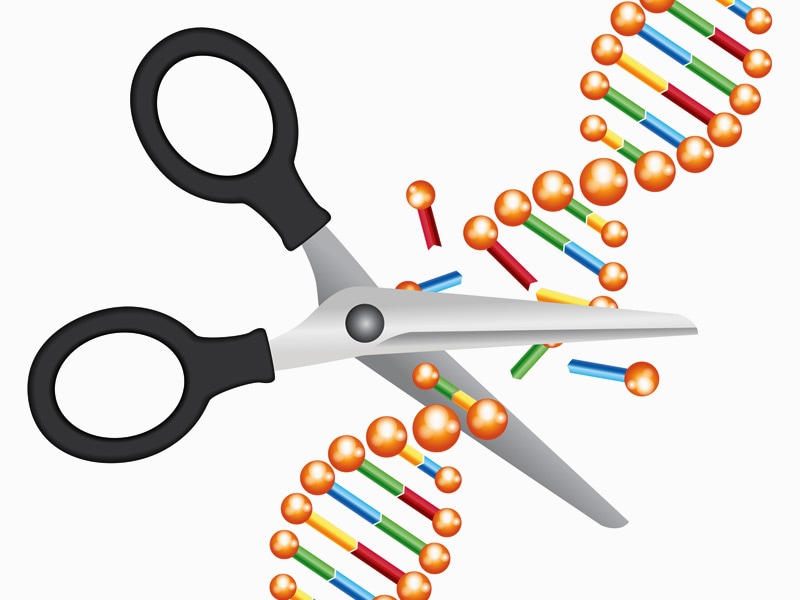NAS Panel Backs Human Germline Editing, With Many Caveats
Modifying genes in an embryo to prevent disease or disability in that child and subsequent generations could be allowed in the future if certain criteria are met, said a National Academy of Sciences (NAS) expert committee in a new report.
However, the 22-member panel, made up of scientists, ethicists, lawyers, physicians, and geneticists from around the world, said in its February 14 report, Human Genome Editing: Science, Ethics, and Governance, that taking gene editing one step further — to make generations of more intelligent or stronger offspring, for instance — should not be allowed at this time.
Even so, the idea of allowing alterations of embryos — even for disease prevention — is certain to be controversial.
“This report is a dramatic departure from the widespread global agreement that human germline modification should remain off limits,” said Marcy Darnovsky, PhD, executive director of the Center for Genetics and Society, in a statement. The report “acknowledges many of the widely recognized risks, including stigmatizing people with disabilities, exacerbating existing inequalities, and introducing new eugenic abuses,” she said, adding, “Strangely, there’s no apparent connection between those dire risks and the recommendation to move ahead.”
Forty nations — and a binding international treaty, the Council of Europe Convention on Human Rights and Biomedicine — have prohibited human germline modification. In the United States, it is legal to conduct research on human embryos in many states, but the US Food and Drug Administration is barred by law from considering approval of a clinical trial involving “research in which a human embryo is intentionally created or modified to include a heritable genetic modification,” according to the NAS.
The committee weighed the benefits and risks — to individuals and society — and concluded that “caution is absolutely needed, but that being cautious does not mean prohibition,” said NAS committee cochair Alta Charo, Sheldon B. Lubar Distinguished Chair and Warren P. Knowles Professor of Law and Bioethics at the University of Wisconsin in Madison, in a media briefing.
“In the past, there has been a line drawn by many that says that one should refrain from editing heritable features,” said Richard O. Hynes, PhD, also a cochair. That was because there was no way to do it safely, he said. And while that may still be true, “one can look forward now and see that it’s likely to become possible at some point,” said Dr Hynes, an investigator at the Howard Hughes Medical Institute, and Daniel K. Ludwig Professor for Cancer Research at the Massachusetts Institute of Technology in Cambridge.
“We can no longer say simply — can’t be done — because perhaps it can,” he said. “We need to think about how to address it when that situation changes,” said Dr Hynes, who predicted the ability to manipulate germlines at within 5 to 10 years.
Acceptable Conditions?
The NAS committee listed a long set of circumstances in which a trial of germline edits to an embryo would be acceptable:
* An absence of reasonable alternatives
* Restriction to preventing a serious disease or condition
* Restriction to editing genes that have been convincingly demonstrated to cause or to strongly predispose to the disease or condition
* Restriction to converting such genes to versions that are prevalent in the population and are known to be associated with ordinary health with little or no evidence of adverse effects
* Availability of credible preclinical and/or clinical data on risks and potential health benefits of the procedures
* Ongoing, rigorous oversight during clinical trials of the effects of the procedure on the health and safety of the research participants
* Comprehensive plans for long-term, multigenerational follow-up while still respecting personal autonomy
* Maximum transparency consistent with patient privacy
* Continued reassessment of both health and societal benefits and risks, with broad, on-going participation and input by the public
* Reliable oversight mechanisms to prevent extension to uses other than preventing a serious disease or condition
If trials can’t meet these criteria, “they shouldn’t be allowed,” said Dr Hynes.
The NAS panel had plenty of concerns raised by the potential of germline editing, said Charo. Among them: what will happen when an edit is multiplied through generations; the feasibility of long-term safety and efficacy follow-up over multiple generations; a lack of informed consent for the embryo; the spectre of eugenics; and society’s acceptance of those who choose not to edit a potentially flawed germline. The panel also considered the possibility of the technology going beyond disease intervention to create “designer babies,” she said.
Another overarching consideration: the effect of humans intervening in their own evolution, said Charo.
But the potential benefits to parents who want to have a genetically connected child without passing on hereditary conditions will likely be outweighed by the risks, many of which can be mitigated through transparency, public discussions, regulatory oversight, and international agreement on guiding principles, said Charo.
Edits for Basic Science, Disease OK
The committee had fewer concerns about gene editing being used in basic science and on somatic cells.
Gene editing — which uses enzymes to cut DNA to remove, alter, or replace specific DNA sequences — is already being used to discover the properties and action of different genes and is being tested in humans to treat specific conditions. For instance, in cancer, T cells are edited to become more effective at killing tumor cells. Cancer immunotherapy is “very active and looks very promising,” said Dr Hynes.
New tools that have made the edits cheaper and faster, such as CRISPR-Cas9 have unleashed a vast potential in both basic science and treating disease or disability, said the panel.
It saw no reason to be overly concerned about the new tools or its rapid progress in those areas. The NAS committee concluded that “the ethical norms and regulatory regimes developed for human clinical research, gene transfer research, and existing somatic cell therapy are appropriate for the management of new somatic genome-editing applications aimed at treating or preventing disease and disability.”
There is some worry that mistakes can be made, however, especially so-called off-target effects, in which an edit is made in an unintended place. Dr Hynes said off-target effects are being rapidly reduced. But the panel did not feel comfortable recommending a standard for acceptable off-target rates.
Will All Nations Follow?
The NAS committee’s recommendations are not binding in the US or elsewhere, and various nations have taken different approaches up to this point, especially on germline edits.
In 2015, National Institutes of Health (NIH) Director Francis Collins, MD, PhD, described that use of the technology as a stopping point. “The concept of altering the human germline in embryos for clinical purposes has been debated over many years from many different perspectives, and has been viewed almost universally as a line that should not be crossed,” he said, in a statement, adding that the NIH “will not fund any use of gene-editing technologies in human embryos.”
In February 2016, the United Kingdom’s Human Fertilisation and Embryology Authority became the first regulator in the world to approve germline edits of a human embryo. It gave the green light to an application from London’s Francis Crick Institute to use CRISPR-Cas9 in healthy human embryos to see whether the modifications would shed light on infertility. The embryos were to be destroyed after study.
NAS officials and panel members said they were optimistic that the world’s scientists and regulatory authorities would come to some sort of agreement, at least on overarching principles to guide gene editing and germline edits, in particular. The NAS purposely included international representatives on the expert panel and held a series of meetings with global participants and sponsors, such as the Chinese Academy of Sciences and the United Kingdom’s Royal Society. More summits are planned, in both China and the UK.
“The bottom line is that there is no planetary government with enforcement power,” said Charo. But, she said, the committee and the NAS, Chinese, and Royal societies were trying to develop “international norms.”
The hope is to “try and limit the possibility of this technology being used for anything other than the kind of beneficial purposes that we’ve outlined in this report,” said Charo.
“Human Genome Editing: Science, Ethics, and Governance,” was funded by the Defense Advanced Research Projects Agency, the Greenwall Foundation, the John D. and Catherine T. MacArthur Foundation, US Department of Health and Human Services, US Food and Drug Administration, and the Wellcome Trust, with additional support from the National Academies’ Presidents’ Circle Fund and the National Academy of Sciences W.K. Kellogg Foundation Fund.

